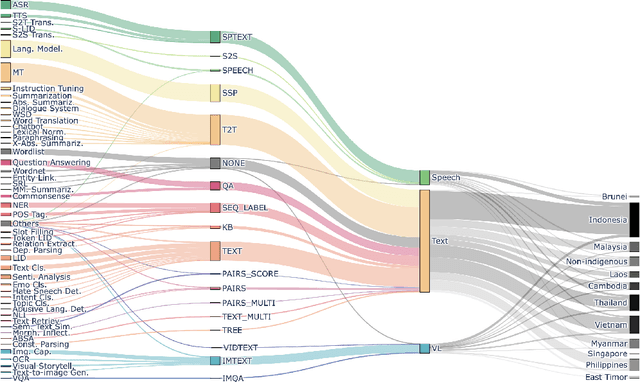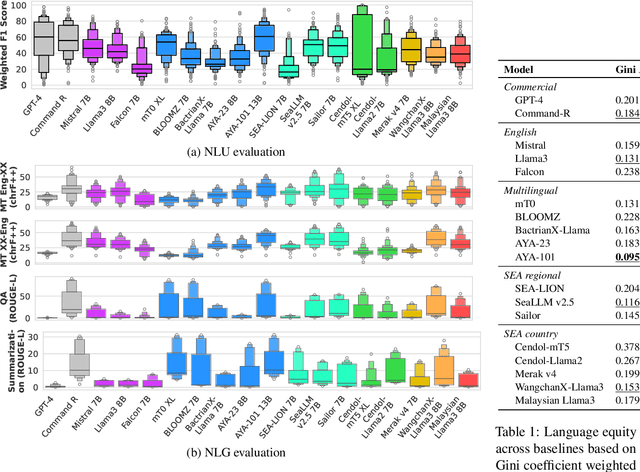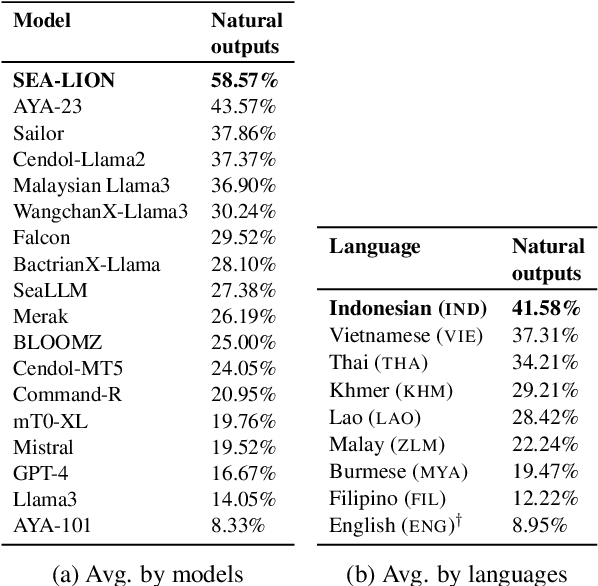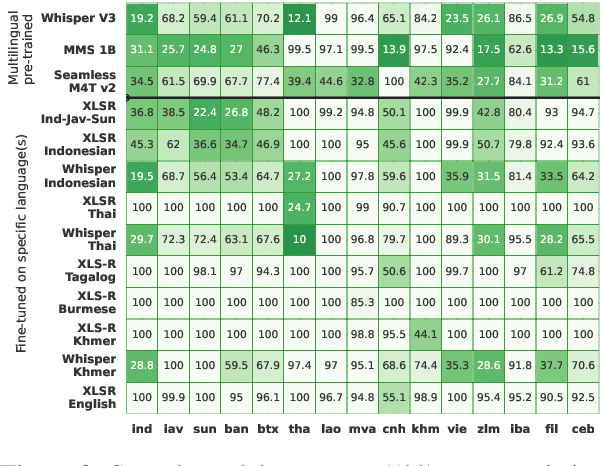Onno P. Kampman
Crowdsource, Crawl, or Generate? Creating SEA-VL, a Multicultural Vision-Language Dataset for Southeast Asia
Mar 10, 2025Abstract:Southeast Asia (SEA) is a region of extraordinary linguistic and cultural diversity, yet it remains significantly underrepresented in vision-language (VL) research. This often results in artificial intelligence (AI) models that fail to capture SEA cultural nuances. To fill this gap, we present SEA-VL, an open-source initiative dedicated to developing high-quality, culturally relevant data for SEA languages. By involving contributors from SEA countries, SEA-VL aims to ensure better cultural relevance and diversity, fostering greater inclusivity of underrepresented languages in VL research. Beyond crowdsourcing, our initiative goes one step further in the exploration of the automatic collection of culturally relevant images through crawling and image generation. First, we find that image crawling achieves approximately ~85% cultural relevance while being more cost- and time-efficient than crowdsourcing. Second, despite the substantial progress in generative vision models, synthetic images remain unreliable in accurately reflecting SEA cultures. The generated images often fail to reflect the nuanced traditions and cultural contexts of the region. Collectively, we gather 1.28M SEA culturally-relevant images, more than 50 times larger than other existing datasets. Through SEA-VL, we aim to bridge the representation gap in SEA, fostering the development of more inclusive AI systems that authentically represent diverse cultures across SEA.
SEACrowd: A Multilingual Multimodal Data Hub and Benchmark Suite for Southeast Asian Languages
Jun 14, 2024



Abstract:Southeast Asia (SEA) is a region rich in linguistic diversity and cultural variety, with over 1,300 indigenous languages and a population of 671 million people. However, prevailing AI models suffer from a significant lack of representation of texts, images, and audio datasets from SEA, compromising the quality of AI models for SEA languages. Evaluating models for SEA languages is challenging due to the scarcity of high-quality datasets, compounded by the dominance of English training data, raising concerns about potential cultural misrepresentation. To address these challenges, we introduce SEACrowd, a collaborative initiative that consolidates a comprehensive resource hub that fills the resource gap by providing standardized corpora in nearly 1,000 SEA languages across three modalities. Through our SEACrowd benchmarks, we assess the quality of AI models on 36 indigenous languages across 13 tasks, offering valuable insights into the current AI landscape in SEA. Furthermore, we propose strategies to facilitate greater AI advancements, maximizing potential utility and resource equity for the future of AI in SEA.
Modeling the Machine Learning Multiverse
Jun 13, 2022



Abstract:Amid mounting concern about the reliability and credibility of machine learning research, we present a principled framework for making robust and generalizable claims: the Multiverse Analysis. Our framework builds upon the Multiverse Analysis (Steegen et al., 2016) introduced in response to psychology's own reproducibility crisis. To efficiently explore high-dimensional and often continuous ML search spaces, we model the multiverse with a Gaussian Process surrogate and apply Bayesian experimental design. Our framework is designed to facilitate drawing robust scientific conclusions about model performance, and thus our approach focuses on exploration rather than conventional optimization. In the first of two case studies, we investigate disputed claims about the relative merit of adaptive optimizers. Second, we synthesize conflicting research on the effect of learning rate on the large batch training generalization gap. For the machine learning community, the Multiverse Analysis is a simple and effective technique for identifying robust claims, for increasing transparency, and a step toward improved reproducibility.
Perspectives on Machine Learning from Psychology's Reproducibility Crisis
Apr 23, 2021Abstract:In the early 2010s, a crisis of reproducibility rocked the field of psychology. Following a period of reflection, the field has responded with radical reform of its scientific practices. More recently, similar questions about the reproducibility of machine learning research have also come to the fore. In this short paper, we present select ideas from psychology's reformation, translating them into relevance for a machine learning audience.
 Add to Chrome
Add to Chrome Add to Firefox
Add to Firefox Add to Edge
Add to Edge